How to Harness Female Physiology for Peak Training Performance
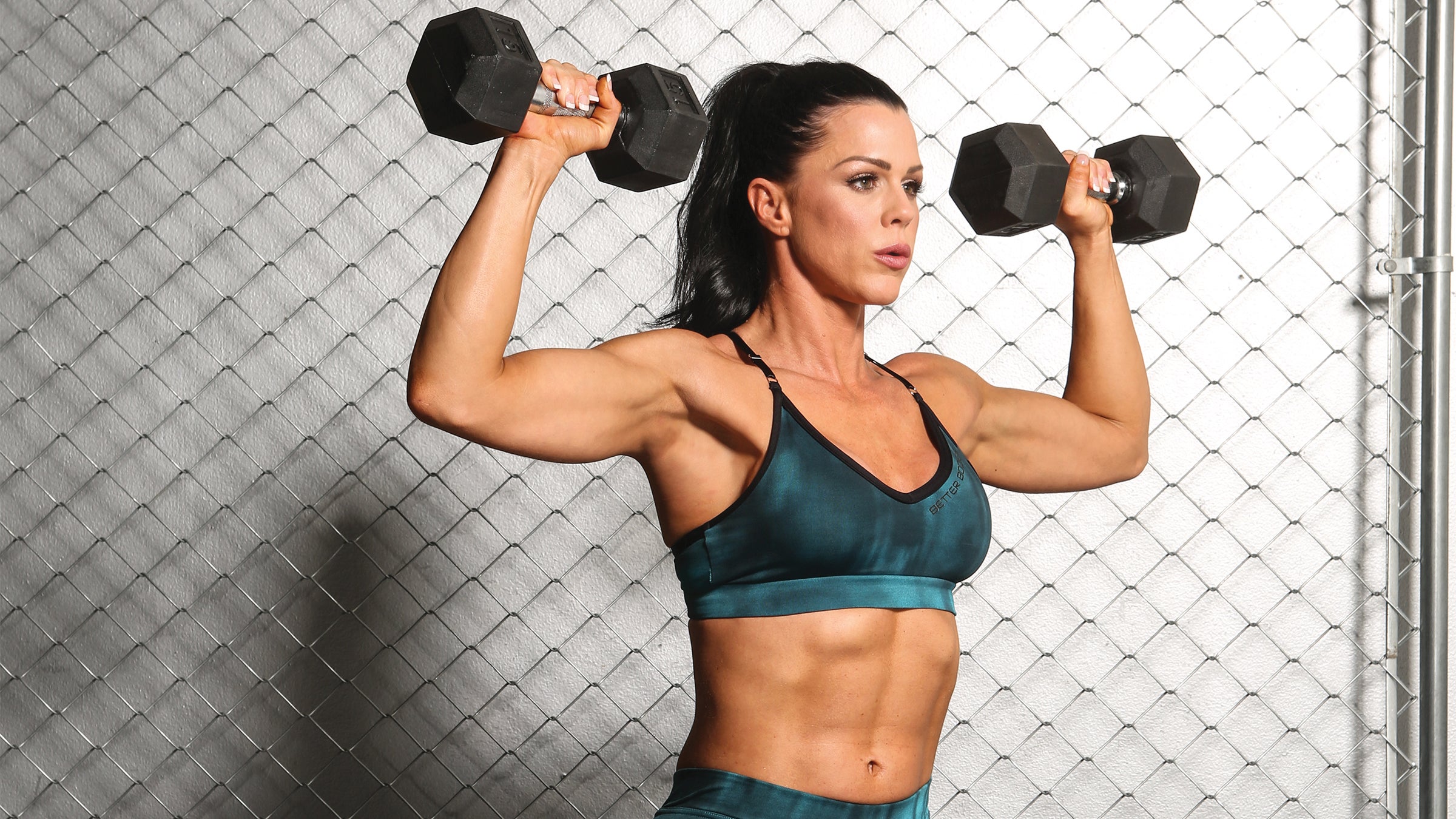
Iron isn’t sexist. Neither is sweat. More and more stereotypes get shattered daily as women join the elite ranks of Spartan races, American Ninja Warrior and CrossFit competitions. Yet that ever-progressing equality does not necessarily extend to the weight room, and sometimes it flat-out does not make sense to train like a man. Distinct gender differences designed by Mother Nature affect everything from body shape to internal chemistry to physical strength. But that which makes us different also can make us stronger. Read on to discover how to play to your strengths.
Your Center of M(ass)
Men carry proportionally more mass — both fat and muscle — in their upper bodies, while we women tend to be more bottom-heavy. This means our center of mass is lower, which is not necessarily a bad thing: We are more stable and controllable because our relative weight is closer to the ground, meaning we are rock stars at things like yoga and pistol squats. But upper-body moves like pull-ups and muscle-ups are more of a challenge because our ratio of upper-body muscle to total-body mass is less as compared to men.
Take advantage of your lower center of mass and implement exercises such as skater jumps and agility drills to further hone your balance and flexibility, develop strength and power, and burn mega-calories. And while pull-ups and push-ups may be warm-up moves for men, you can use them for developing strength and muscle mass. Can’t quite get your chin above the bar? Use those super-strong legs to jump up to grab it, then take advantage of the muscle-building negative on the way down.
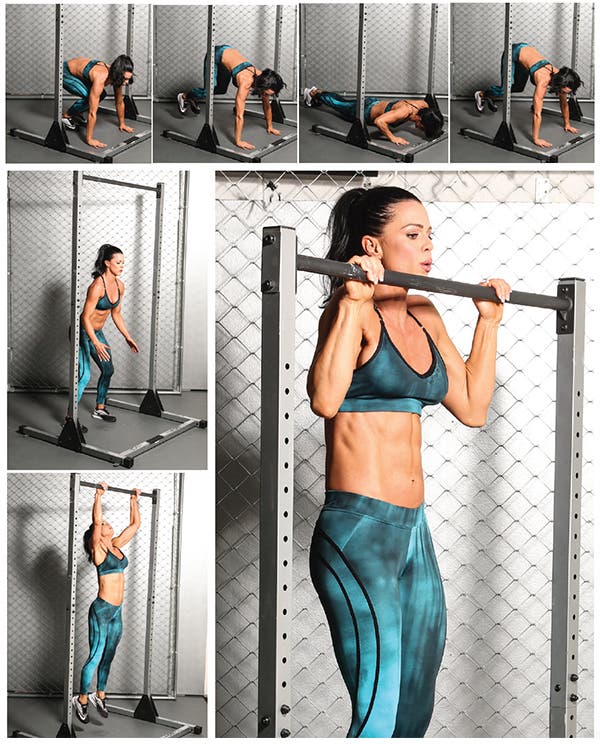
Mass Builder: Burpee Pull-Up
Stand underneath a pull-up bar, then crouch, place your hands on the ground and jump your feet back into plank. Do a push-up, then hop your feet back underneath you and explode upward to grab the bar. Use that upward momentum to help you do a full pull-up, then lower slowly back down. Drop off the bar and go right into the next burpee.
Symmetry (Dis)similarities
While we’re on the subject of upper vs. lower body, men are notorious for training their arms, shoulders and abs — their mirror muscles — while women are obsessed with training legs and glutes. It’s only natural that you want to play to the strengths you already have and kill it in the squat rack, and there is nothing wrong with that. But if your goal is to balance your physique aesthetically and make your lower body appear smaller without actually shrinking it, then think like a man and hone in on your upper half. From a body-sculpting standpoint, having wider lats and shoulders makes your waist look smaller and gives you an hourglass silhouette.
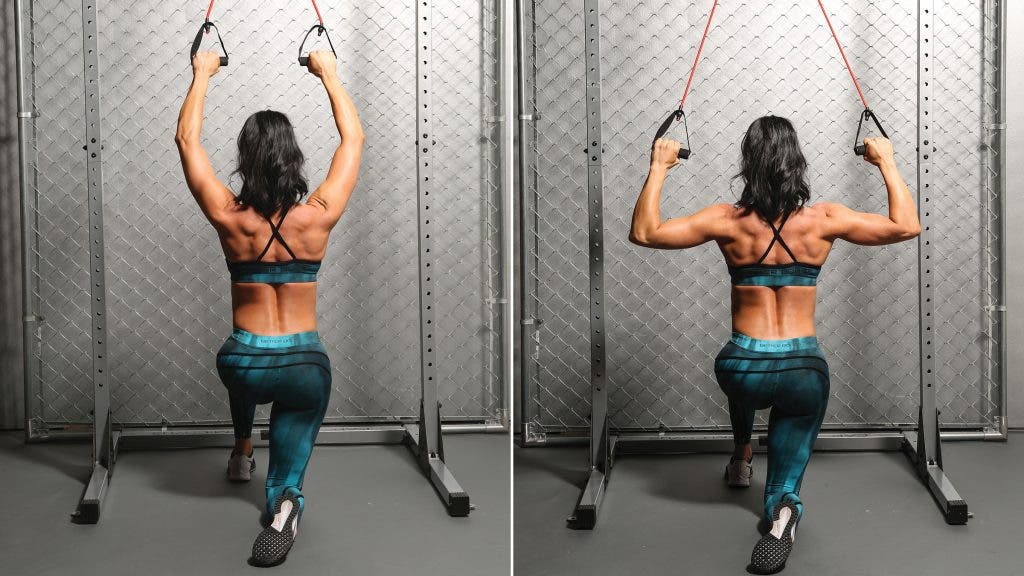
Be More Balanced: Kneeling Band Lat Pulldown
Secure a resistance band over a high bar and grasp the handles with your palms facing forward. Assume a kneeling split stance — one knee on the ground, the other bent 90 degrees in front of you — underneath the bar. Draw your shoulder blades together, then drive your elbows down to pull the handles, then squeeze at the bottom. Slowly return to the start and repeat.
Building your upper half with strength training can create the illusion of a smaller waist and hips.
Fiber Fix
Women are naturally better at moderate-intensity activities, since the bulk of our muscle fibers tend to be Type 1, and we are generally more comfortable using modest weights when lifting. Men, on the other hand, typically have more Type II fibers because they train much heavier than women, and as a result, they sport leaner physiques. Lifting heavy builds those Type II fibers, which are most responsible for hypertrophy and which boost metabolic intensity. These fibers only get activated when there is a high-force demand, a power move, or if all other fibers in the body are completely exhausted.
To add this kind of fat-burning, lean tissue and develop the definition and shape you crave, you have to use weight. Not those plastic-coated dumbbells your cat could bat across the floor — real weight with some heft to it. Add a max strength phase to your programming and develop your own host of Type II badass fibers: During a four- to six-week time frame, choose weights that you can only lift for six reps or fewer before failing — i.e., you physically can’t do another rep with good form. Take longer rest periods in between sets, and focus your efforts on multi-joint moves like squats, deadlifts and bench presses. Return to a hypertrophy or endurance-style regimen for 12 weeks, then repeat that cycle.
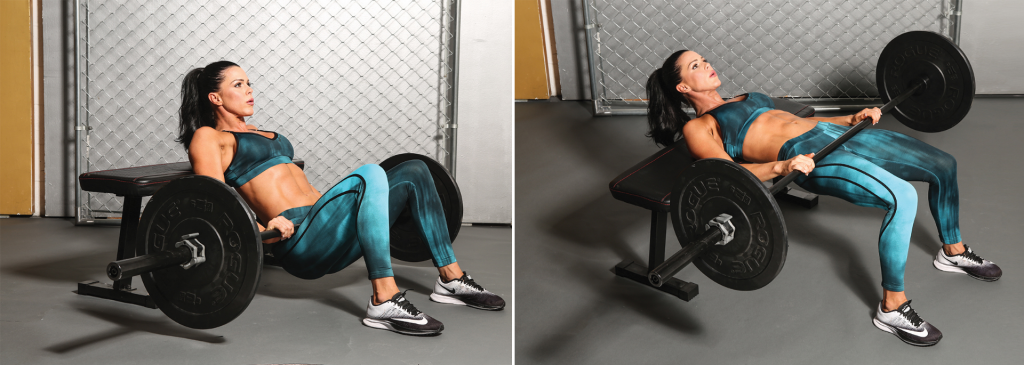
Glute Builder: Hip Thrust
Position your upper back and shoulders on the broad side of a flat bench and sit on the floor. Hold a heavy barbell in your hip crease with both hands and spread your feet about shoulder-width apart. Lift your glutes off the floor a couple of inches, then drive your heels into the floor and press your hips explosively toward the sky, stopping when they align with your knees and shoulders. Pause for two counts, then slowly lower almost to the start, then explode up again.
Cycle With Your Cycle
Hypertrophy comes easier for men, partly because of how they train but also because of their hormonal makeup: Men naturally have more testosterone than women, and therefore a greater propensity for developing muscle. But there is actually a “time of the month” when men and women are hormonally similar.
After ovulation, (around Day 14 for a 28-day cycle), estrogen and progesterone tell your body to conserve fat stores and to fuel a hypothetical/potential pregnancy, and it is the least favorable time to build muscle and lose fat. The first two weeks of a woman’s cycle (days 1 to 14), however, are prime time for hypertrophy and fat loss. During this phase, your estrogen and progesterone levels are lowest and are closer to levels found in men.
Program your training around your cycle: Reserve HIIT and heavy training days for the first two weeks when your hormonal makeup is more “masculine,” and focus on isolation moves and recovery protocols during the second two weeks when female hormones run amok.
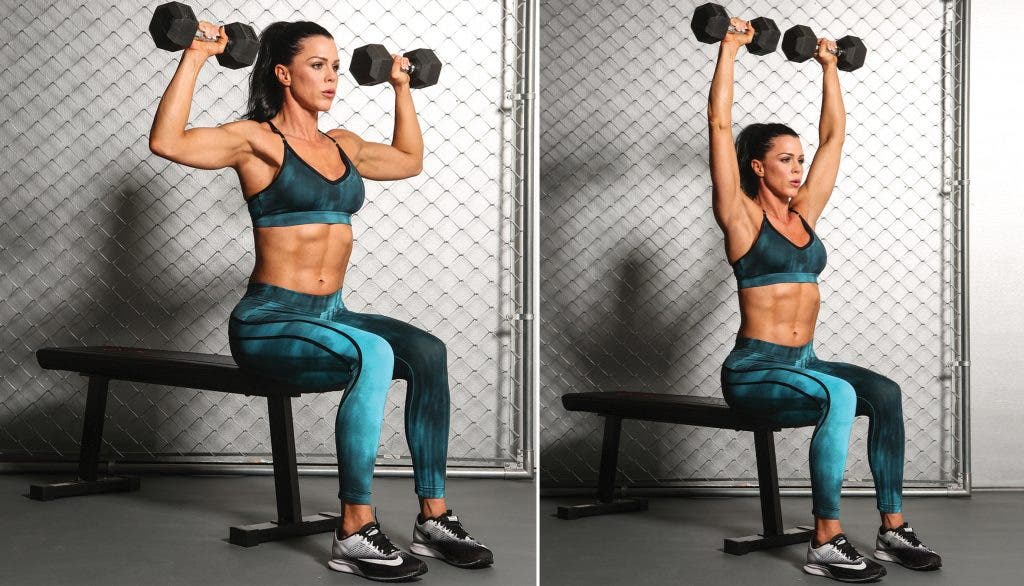
Shoulder Builder: Overhead Dumbbell Press
Sit on a bench and hold a set of dumbbells level with your ears, elbows bent 90 degrees. Powerfully press the weights overhead to full extension, then slowly lower back to the start. Brace your core to avoid letting your rib cage “flare” up with each press.
If you’re looking to add muscle and lose fat, time your programming to coordinate with your menstrual cycle.
Cardio and Fat Burning: The Truth
Women are great at burning fat during aerobic work, and estrogen is associated with a greater preference for fat oxidation. Because of this, our bodies learn to store fat to be used during long cardio sessions, as opposed to men who store excess calories as muscle glycogen — they burn more carbohydrates during training. Some studies show that even during circuit weight training, which is more aerobic, men burn more carbs as energy whereas women tend to use more fat for the same relative amount of work.
The solution here is to do less cardio but at a higher intensity. Recent research suggests that women may undergo higher cardiovascular and metabolic strain during high-intensity interval training workouts and recover better between intervals — meaning we can still push hard on the next round. This kind of training shifts your body from fat burning to carb burning, and while this might seem contrary to your goal, here’s the thing: Once your stored carbs (glycogen) are used up during training, you have to burn fat as recovery fuel in the 24 to 48 hours afterward.
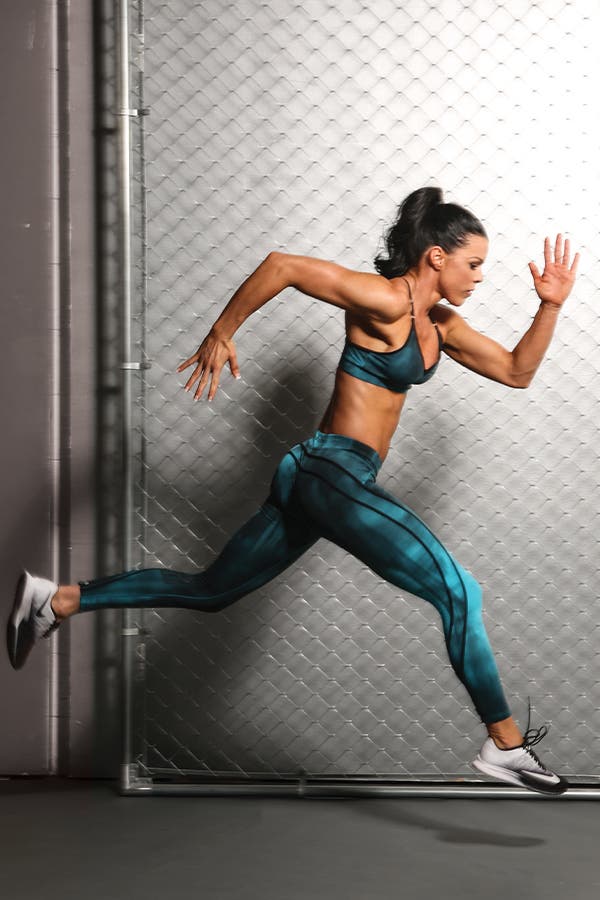
Fat-Blasting HIIT: Simple Sprints
| 5 minutes | Walk/jog, progressively increasing intensity |
| 2 minutes | Fast run/sprint |
| 1 minute | Active recovery (jogging or brisk walking) |
Repeat the sprint/recover cycle six times through, before the cool-down (below).
| 5 minutes | Jog/walk, gradually decreasing intensity |
Once you incinerate all your stored carbohydrates with HIIT workouts, your body will burn fat as fuel for the next 24- t0 48-hours.
Flex Effects
Girls have the upper hand when it comes to flexibility (hence the paucity of men in Pilates). But you can actually be too flexible: Ligaments and tendons that are too loose and extend too far can lead to unstable joints and a higher risk of injury. Women are also at higher risk for valgus collapse — the internal rotation and adduction of the hip — likely because our hips are wider, causing the femur to angle inward. We also tend to keep a more upright torso and potentially use our quads more to squat than men, likely because of greater flexibility in our hips and ankles, allowing for deeper, more upright squats.
Train your posterior chain with moves that engage the hip and knee stabilizers to improve strength and stability in your most vulnerable joints. And rather than focusing on all-over flexibility, hone in on areas that are tight or bothersome and simply maintain mobility in the joints that are already limber.
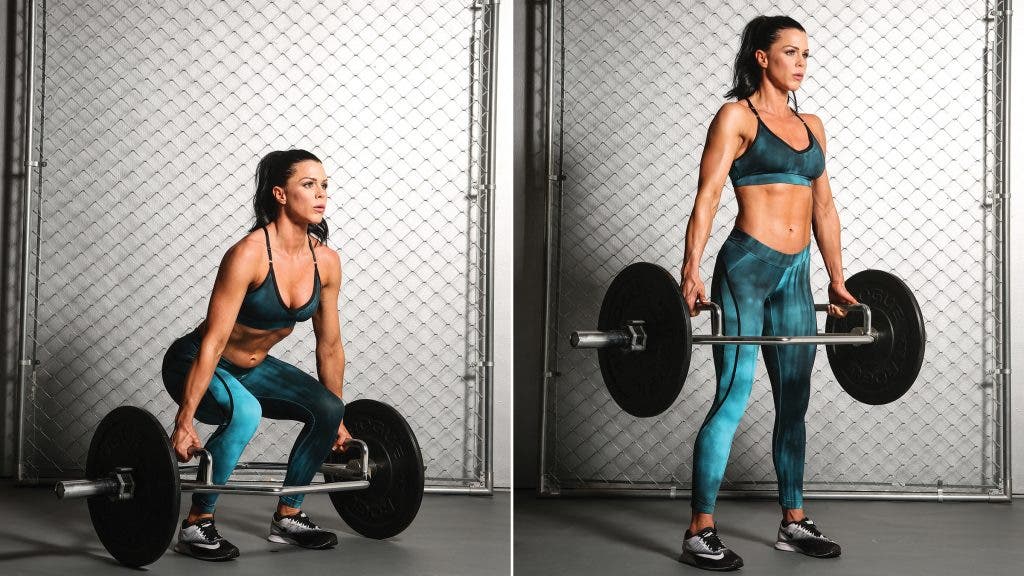
Stabilizing Strengthener: Hex-Bar Deadlift
Stand inside a hex bar with the plates aligned with your midfoot. Hinge at your hips and knees to bend down and grasp the handles. Brace your core, then drive through your heels, powerfully extending your hips and knees at the same rate to stand. Lower slowly and briefly touch down before going right into the next rep.